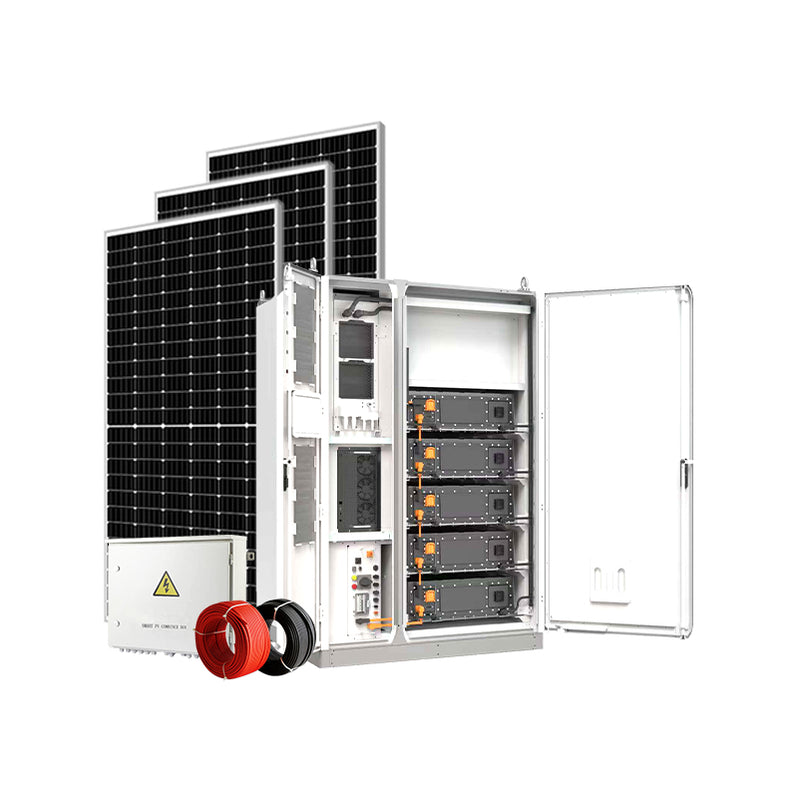Unlock the Secrets: Discover the Best Solar Power Solutions for Your Home!
As the world shifts towards renewable energy sources, solar power systems have emerged as a pivotal option for homeowners looking to reduce their energy bills and minimize their environmental footprint. Harnessing the sun's energy not only contributes to a sustainable future but also offers significant financial benefits. With rising electricity costs and increasing awareness of climate change, many are exploring how solar energy can provide a reliable, cost-effective, and eco-friendly energy solution. Imagine being able to power your home with clean energy, reducing your reliance on fossil fuels, and enjoying the independence that comes with generating your own electricity. In this article, we will delve into the different types of solar power systems available, their features, and essential factors to consider when making a purchase or installation decision.

Understanding Solar Power Systems
A solar power system is designed to convert sunlight into usable electricity for your home. At its core, this technology comprises several key components: solar panels, inverters, and batteries. Solar panels, typically installed on rooftops or in open spaces, capture sunlight and convert it into direct current (DC) electricity. This DC electricity is then passed through an inverter, which transforms it into alternating current (AC) electricity, the standard form used in most households. Additionally, many systems incorporate batteries that store excess energy generated during sunny days for use during cloudy periods or at night. This integration of components allows homeowners to create a dependable energy source while contributing to a greener future.
Types of Solar Power Systems
When considering solar power systems, there are three primary types to evaluate: grid-tied, off-grid, and hybrid systems. Each comes with its own set of features, benefits, and potential drawbacks, making it essential to assess your specific energy needs and lifestyle before making a decision.
Grid-Tied Solar Systems
Grid-tied solar systems are connected to the local electricity grid. This connection allows homeowners to draw power from the grid when their solar panels aren’t generating enough electricity, such as during the night or on cloudy days. The benefits of grid-tied systems include lower installation costs, the ability to sell excess energy back to the grid, and minimal battery storage needs. However, a major drawback is that homeowners remain vulnerable to grid outages—if the power goes out, so does the solar system.
Off-Grid Solar Systems
Unlike grid-tied systems, off-grid solar systems operate independently of the utility grid. These systems are ideal for remote locations where grid access is limited or non-existent. Off-grid systems typically require a robust battery storage solution to ensure consistent power supply. While they provide complete energy independence, the initial setup cost can be higher, and proper energy management is crucial to avoid depleting battery reserves.
Hybrid Solar Systems
Hybrid solar systems combine the best features of both grid-tied and off-grid systems. They allow homeowners to benefit from grid connectivity while having the option to store energy in batteries for use during outages. This flexibility makes hybrid systems an appealing option, though they usually come with a higher initial investment compared to purely grid-tied systems.
Factors to Consider When Choosing a Solar Power System
Choosing the right solar power system requires careful consideration of various factors. First and foremost, assess your energy needs—understanding your consumption patterns can help determine the size and capacity of the system required. Next, consider your budget; while solar energy can lead to long-term savings, the upfront cost can vary significantly based on the type of system and installation. Additionally, evaluate the installation space available on your property; adequate roof or land space is critical for optimal panel placement. Lastly, familiarize yourself with local regulations and incentives, as these can significantly influence your installation options and potential savings.
Installation and Maintenance of Solar Power Systems
The installation process for solar power systems typically involves a few key steps: an initial consultation, system design, permitting, installation, and inspection. Working with a qualified installer can ensure that your system is designed and installed correctly to maximize efficiency. After installation, regular maintenance is essential to keep the system operating at peak performance. This may include cleaning panels and inspecting components annually. Some friends of mine who have installed solar systems recommend staying proactive with maintenance to avoid unexpected costs and ensure the longevity of the system.
Investing in Solar Power Systems
In summary, investing in a solar power system can be a transformative decision for homeowners looking to embrace renewable energy. Understanding the different types of solar systems, evaluating your specific needs, and considering factors such as budget and space are crucial steps in this journey. By making informed choices, you can enjoy the financial savings, energy independence, and environmental benefits that solar energy offers. Take the time to explore your options and join the growing movement towards sustainable living through solar power.







